Humans throughout history have needed a way to store, prepare and eat food. Eventually this led to the creation of what we know today as the kitchen, but how has this room developed over time? In the last 500 years, kitchens have evolved beyond recognition with smart technology and interior design making them the cozy and welcoming hubs of our entire lives, not just places to store and cook food.
This journey through the history of kitchens starts in Britain during Tudor times, with a room that was neither cozy nor smart, but entirely functional with a hearth for cooking, roasting and heating. When it came to decor, the theme was very much ‘basic’, with a plain wooden table and stools all that could possibly pass for comfort. This was a room for cooking, and nothing else.
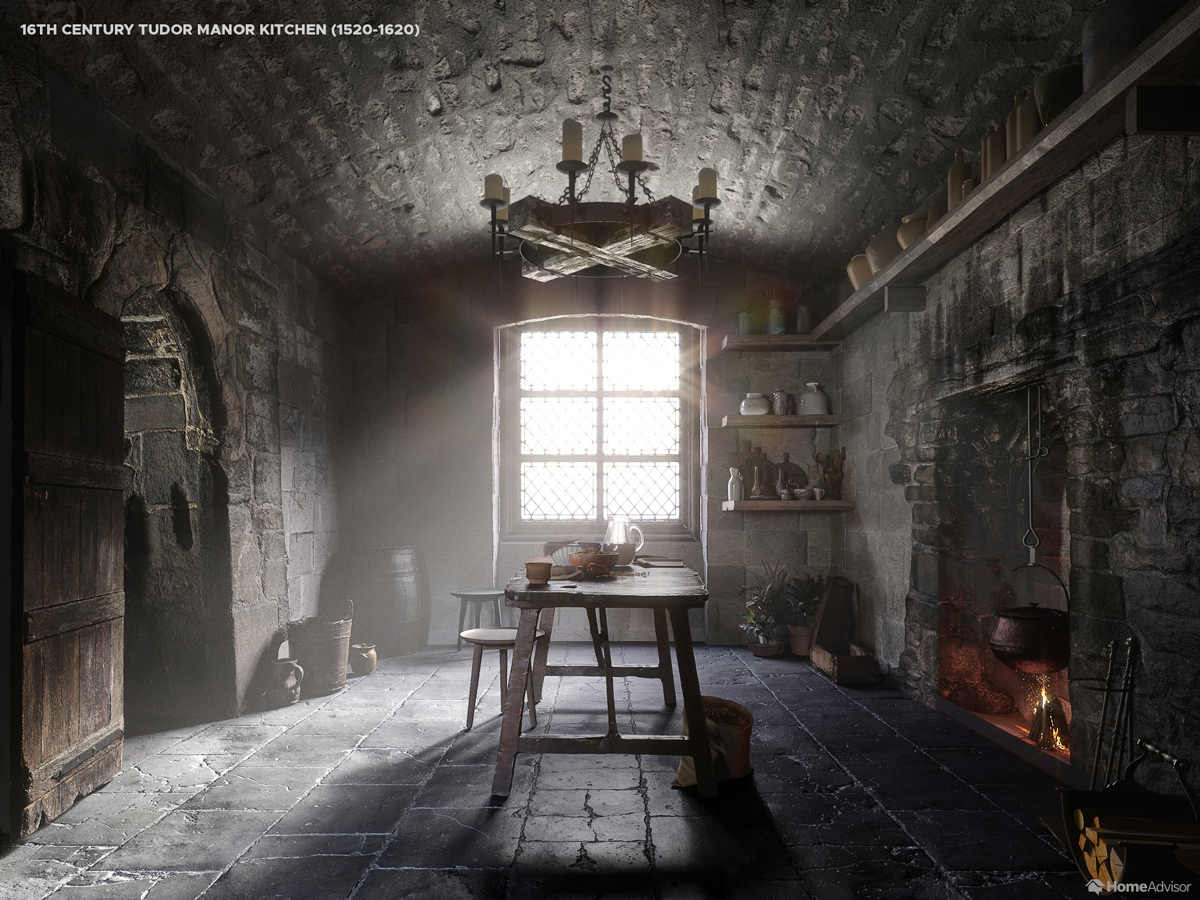
By Stuart times in the late 17th Century, there was slightly more in the way of decoration, not least with the arrival of the kitchen dresser for displaying ceramics. The cooking process had also become more sophisticated, with the Tudor open fire replaced by a cast-iron coal grate, while a mechanical roasting jack saved manual labor when it came to turning the spit.
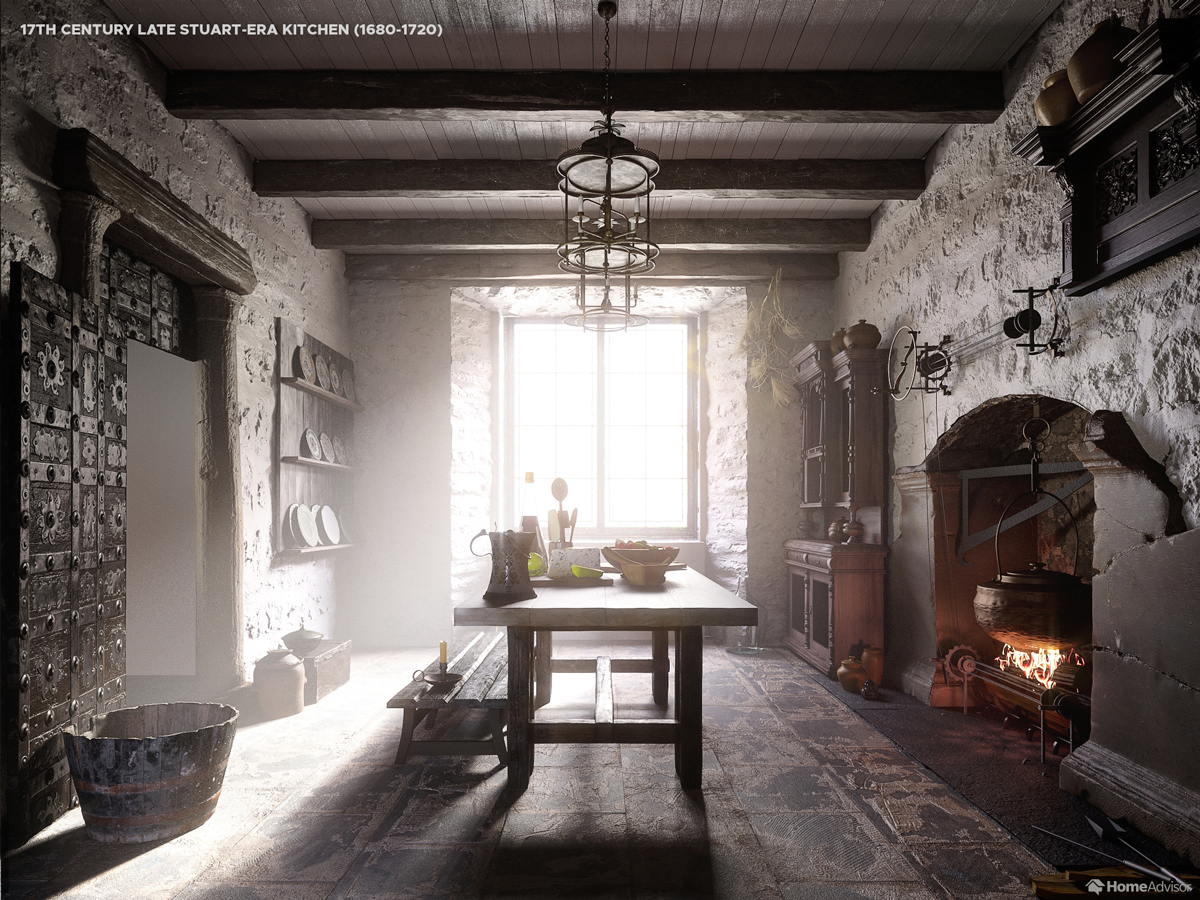
By the 18th Century in Williamsburg, USA, chairs had been added to the kitchen, which was now used as a gathering place as well as a functional space. Technology had also taken a step forwards with a swinging iron crane in the hearth, but this looked out of date by the 1870s in the Victorian kitchen, as it and the hearth were both replaced by a freestanding wood/coal oven, which transformed the way food was cooked.
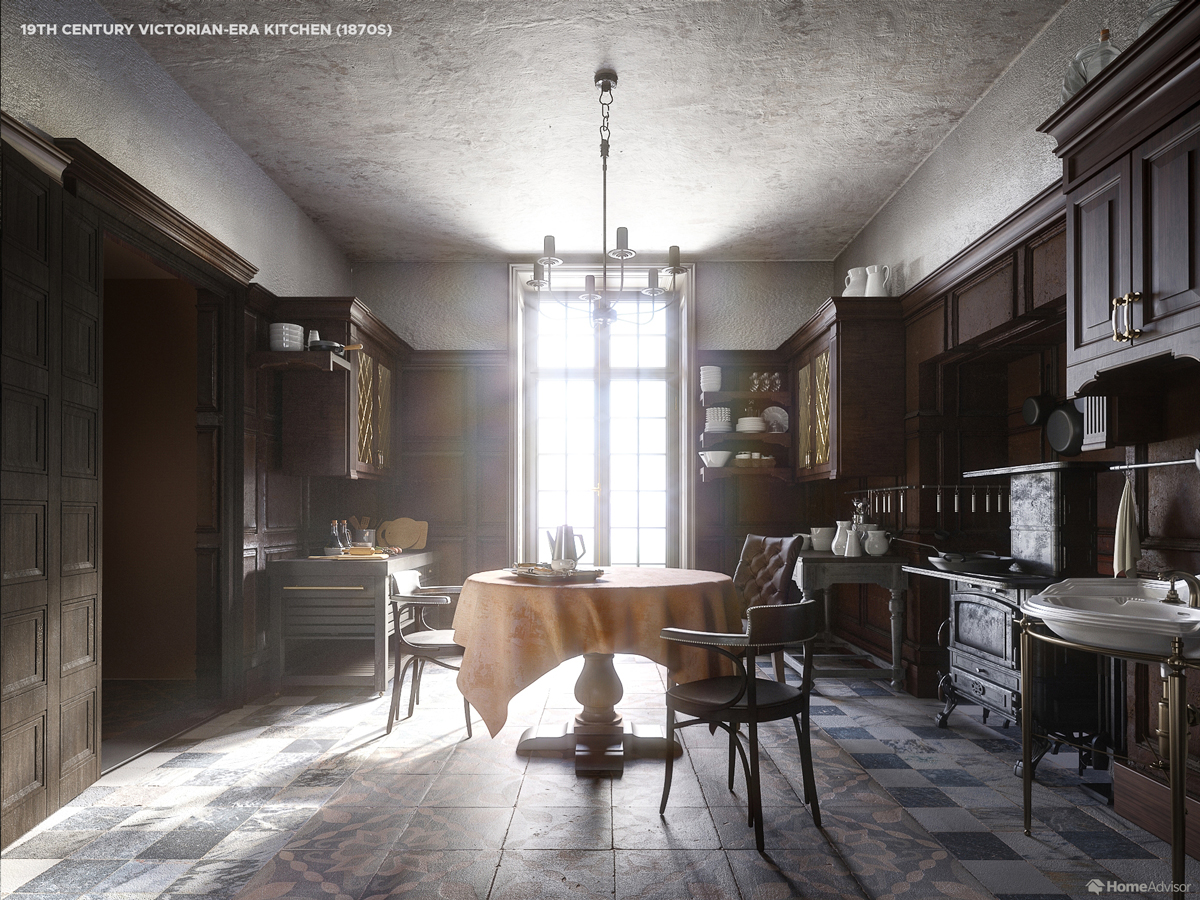
Storage was also changing, with cupboards added to the fixtures and fittings, which not only added to the look and feel of a kitchen like we know it today, but also provided a neat way to store the essentials. Another big arrival at this point was the kitchen sink, even though it was a relatively small and impractical version of what we now have. There’s a much more familiar kind of sink in the 1960s kitchen, which looks much more like a modern kitchen than anything that has gone before it.
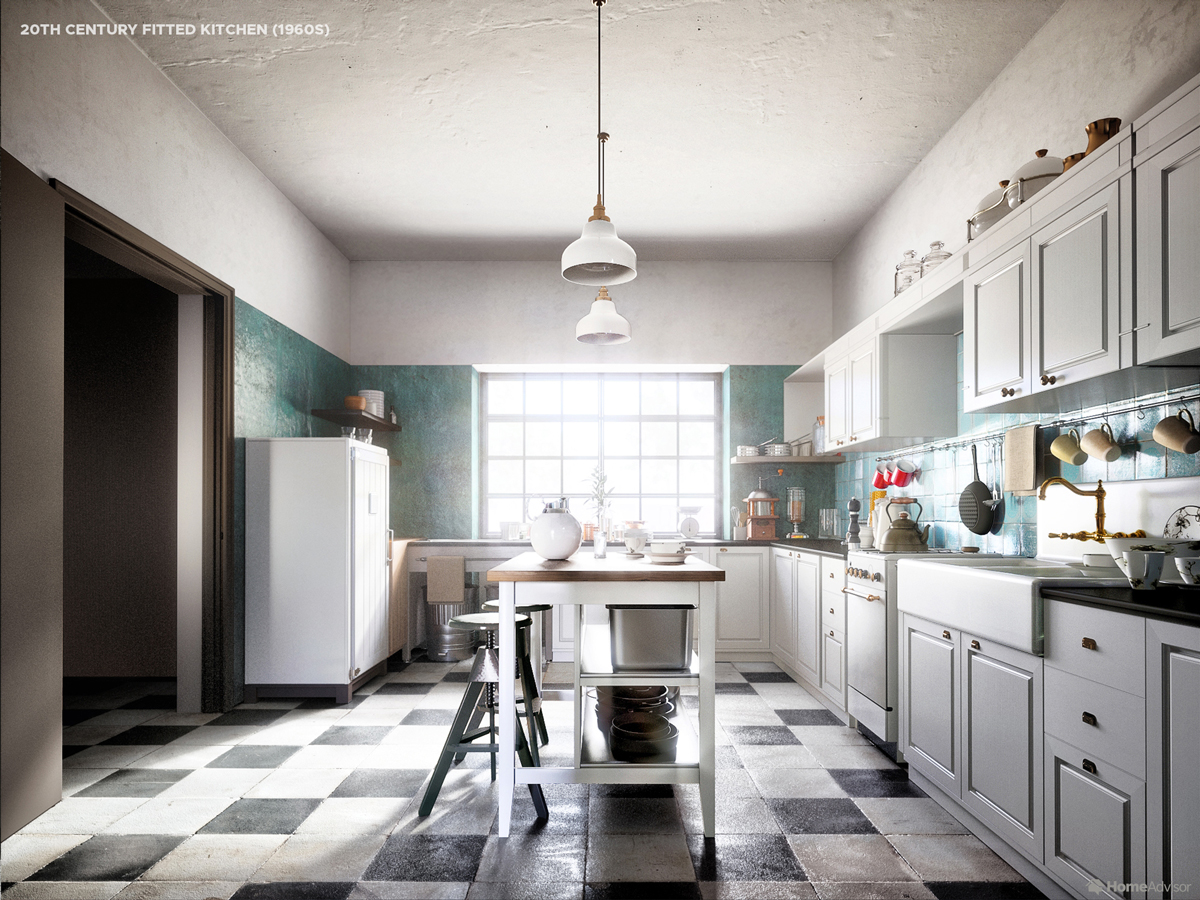
Along with the oven and the sink, the 60s brought another key modern element in the shape of the electric fridge, transforming food storage forever in ways that would have seemed incredible to the owners of the Tudor and Stuart kitchens. The decor had also taken a big step up by this era with a bright and airy feel helped by the arrival of linoleum on the flooring, which remains hugely popular today for its flexibility and ease of cleaning.
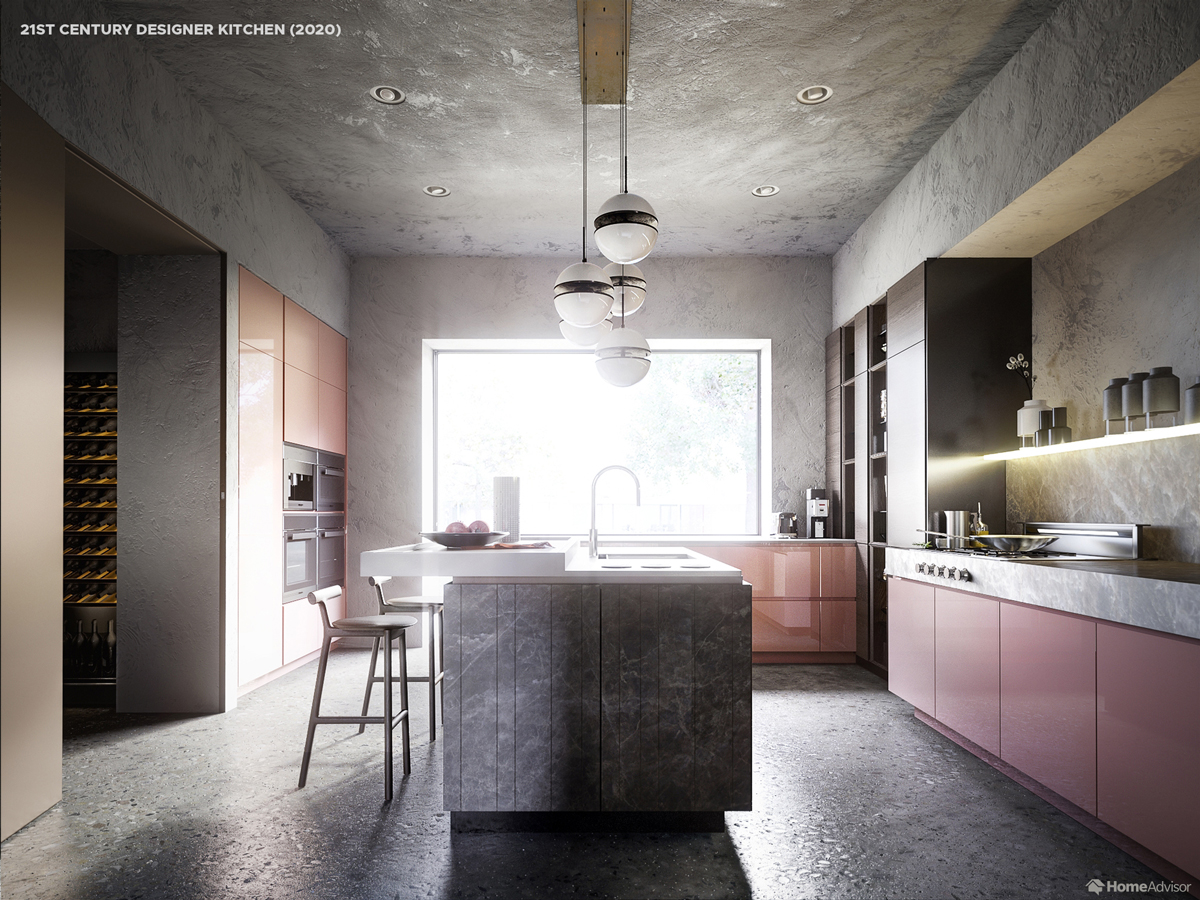
That brings us to 2020 and the age of smart technology and understated design. It’s a social space and a place for creating meals for family and friends and is the sum of all of the kitchens that came before it, with 21st Century appliances mingled in with the inventions of the past. Which of these kitchens looks the most like yours?

